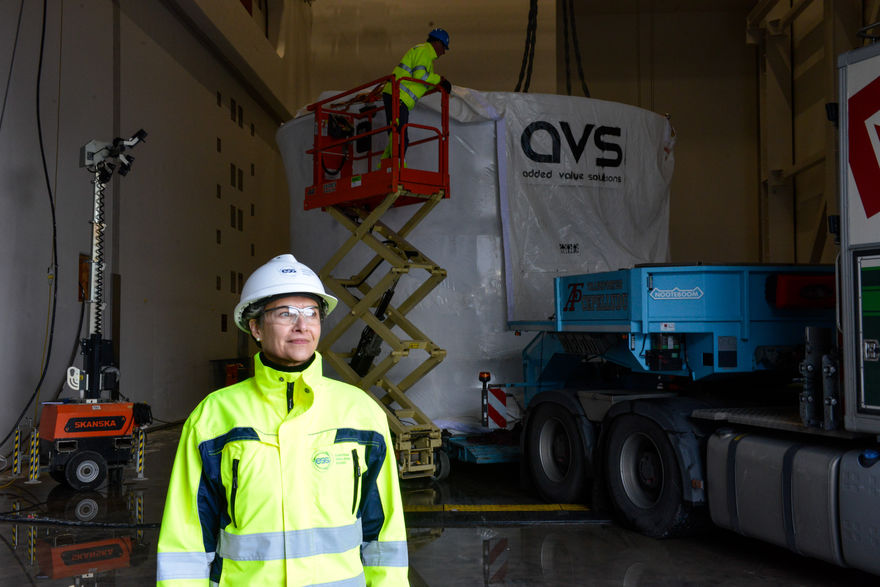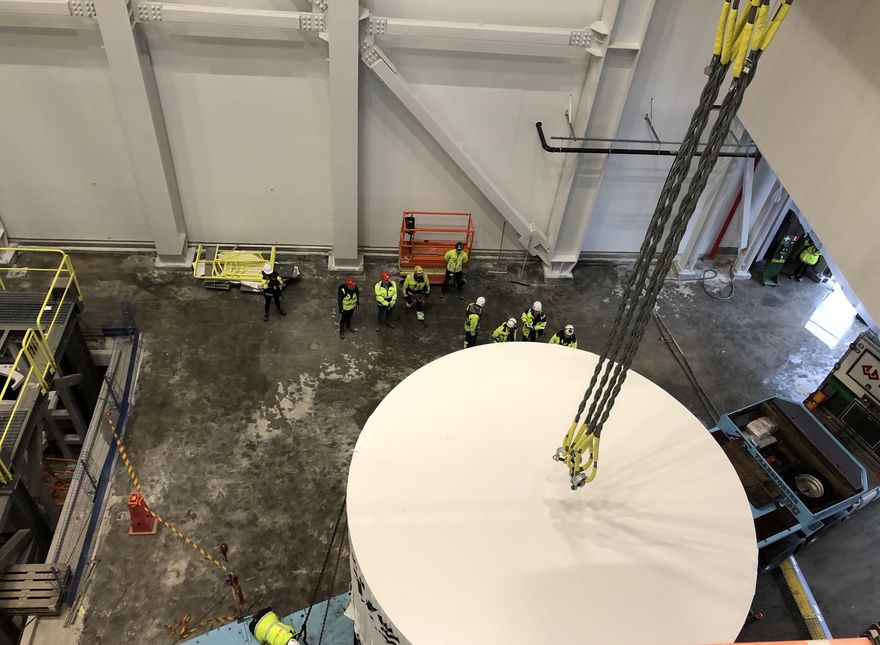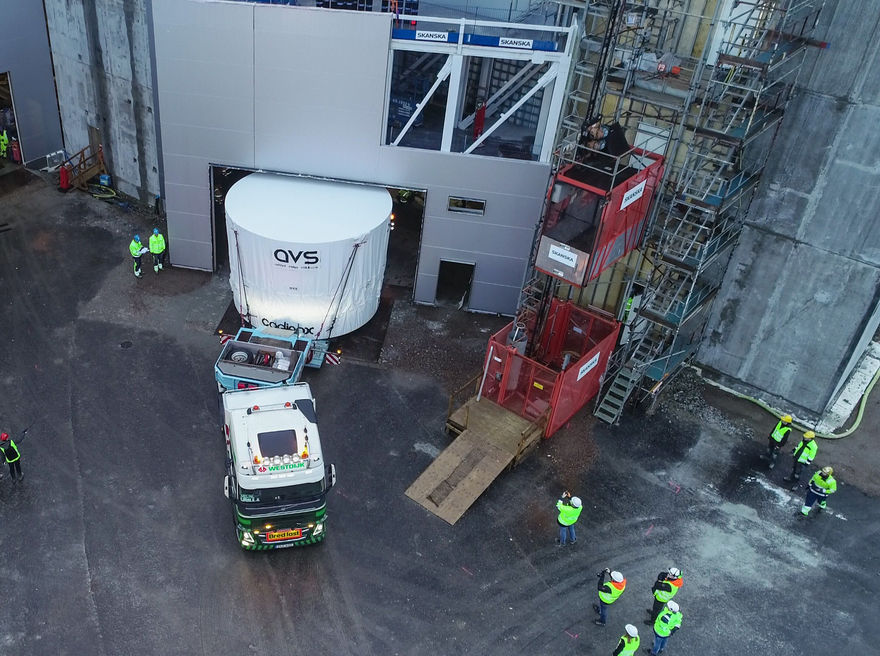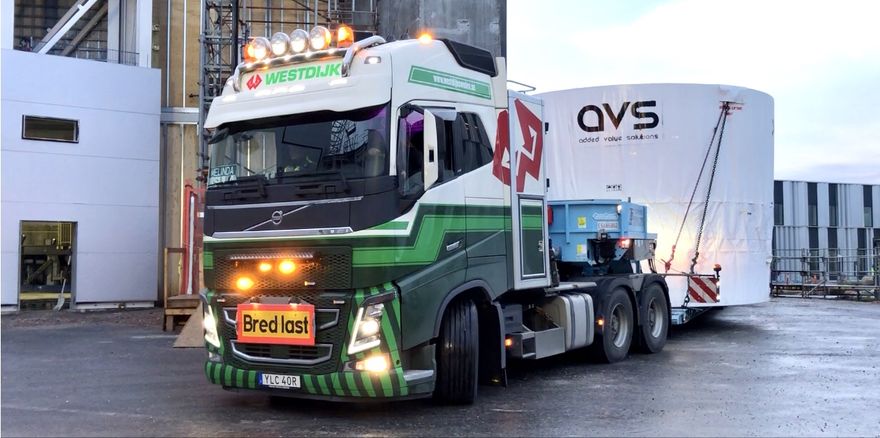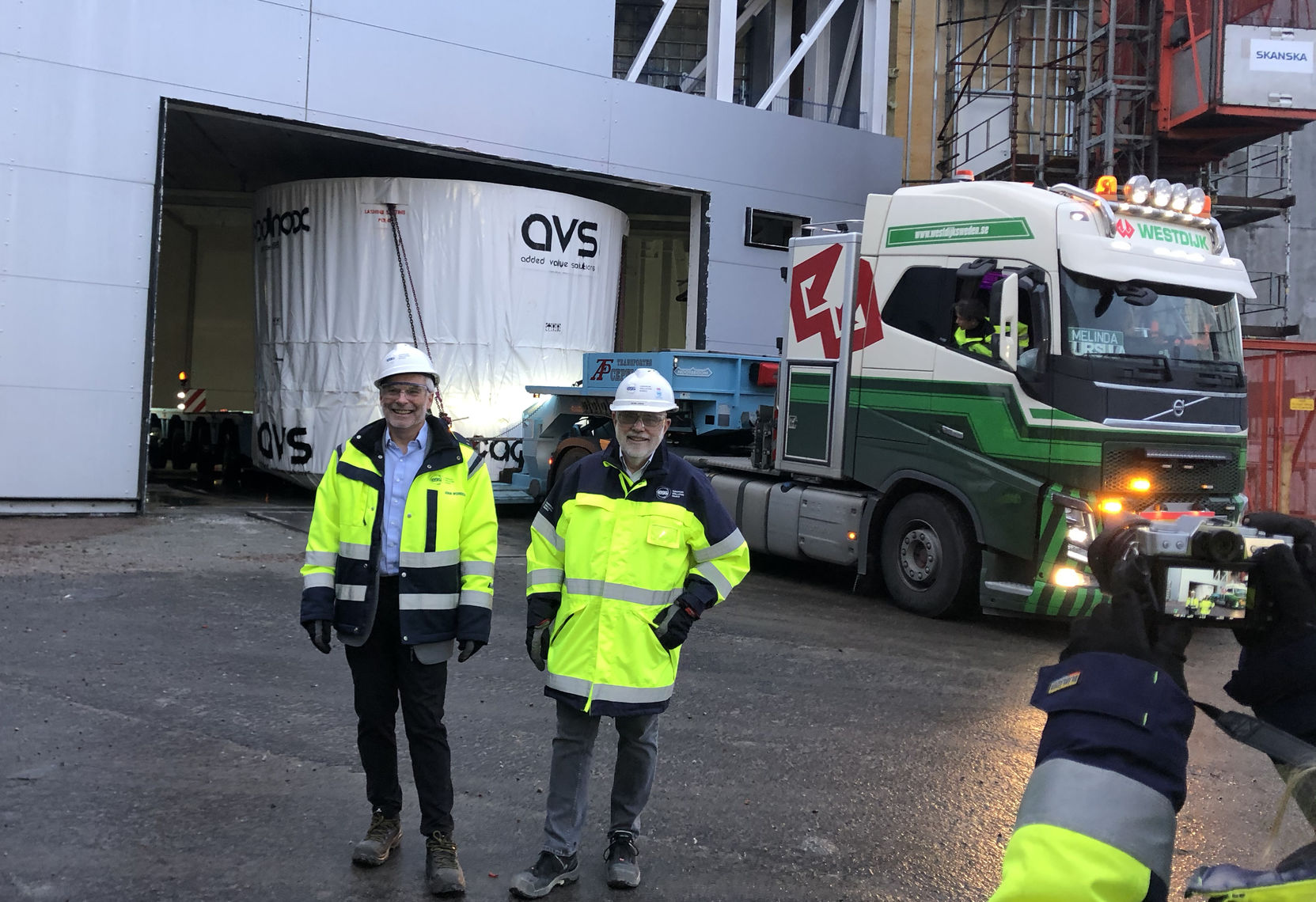
The first major technical component for the ESS Target Station - the Monolith Vessel - was delivered to the construction site in Lund today. The Monolith Vessel, which made it's way by ship from the north of Spain to the south of Sweden, is part of the Spanish in-kind contributions to ESS.
The Monolith vessel arrived by trailer at the ESS construction site early this morning, following a 12-day-long trip by land and sea to Lund. It was delivered in two pieces due to its large weight and size – in total 45 tonnes, six metres high and almost six metres wide. The complex vessel is an important contribution from Spain, provided through the Spanish partner ESS Bilbao and its industrial suppliers AVS and Cadinox.
Spain, with an important neutron research community, has strongly supported ESS since the start of the project and is a fundamental contributor in the construction of the multi-disciplinary research facility.
“The delivery of the Monolith vessel demonstrates yet again the long-standing Spanish commitment to this world-leading research infrastructure in Europe,” said ESS Director General John Womersley. “Spain has, through ESS Bilbao and in collaboration with our team here in Lund, delivered another key technical contribution, and more will follow - allowing ESS to advance science so that future generations can thrive.”
From 2023, ESS will provide unique opportunities within materials research for thousands of scientists from all over the world, benefitting the development of new medicines, better batteries, and more sustainable materials. Through its unprecedented brightness and state-of-the-art technology, ESS will further strengthen and consolidate Europe’s flagship role in neutron scattering.
The 13 member countries together fund and build the cutting-edge research infrastructure, to a large extent through in-kind contributions in the form of technical equipment and services, provided by over 40 in-kind partners throughout Europe.
“Spain’s membership in ESS, the world’s most powerful neutron source, is fundamental for our country as a science nation, especially benefitting Spanish researchers and industrial suppliers,” said Mario Pérez, ESS Bilbao Executive Director. “The shipment of the Monolith vessel marks a major milestone in the ESS project and I am very proud of the teams at ESS Bilbao and ESS, and wish to thank our industrial partners AVS for the engineering and Cadinox for the manufacturing.”
The centre for neutron technologies ESS Bilbao manages all Spain’s in-kind contributions to ESS, and has been an essential partner in the construction of the facility for many years. ESS Bilbao is responsible for the design, manufacturing and delivery of the complete Monolith vessel. The centre is a major contributor to the ESS Target systems; providing the target wheel, drive unit and shaft, as well as other important ESS elements; such as the Medium Energy Beam Transport and radio frequency systems for the accelerator, and the instrument MIRACLES.
“The Monolith Vessel is the result of several years of close collaboration with the competent and committed team at ESS Bilbao,” said Sara Ghatnekar Nilsson, Work Package Manager Monolith Systems at ESS. “Despite technical challenges and the ongoing Covid-19 pandemic, our partners in Spain have managed to deliver this advanced technical component, vital for the facility.”
The Monolith vessel will house the rotating target wheel which contains 7,000 tungsten blocks, from which the neutrons are released in the spallation process. The neutrons are then guided to the scientific instruments that researchers will use to conduct their experiments.

























